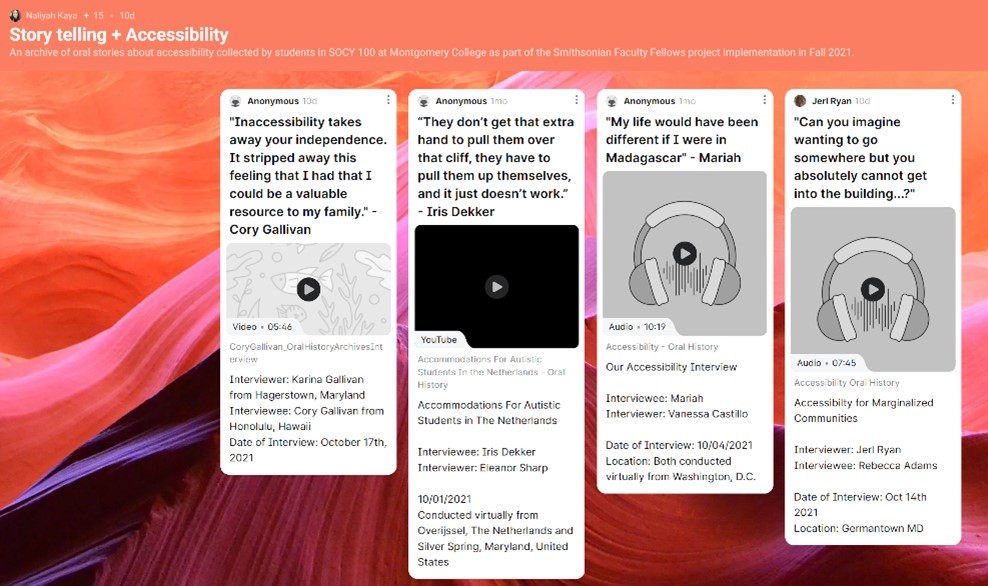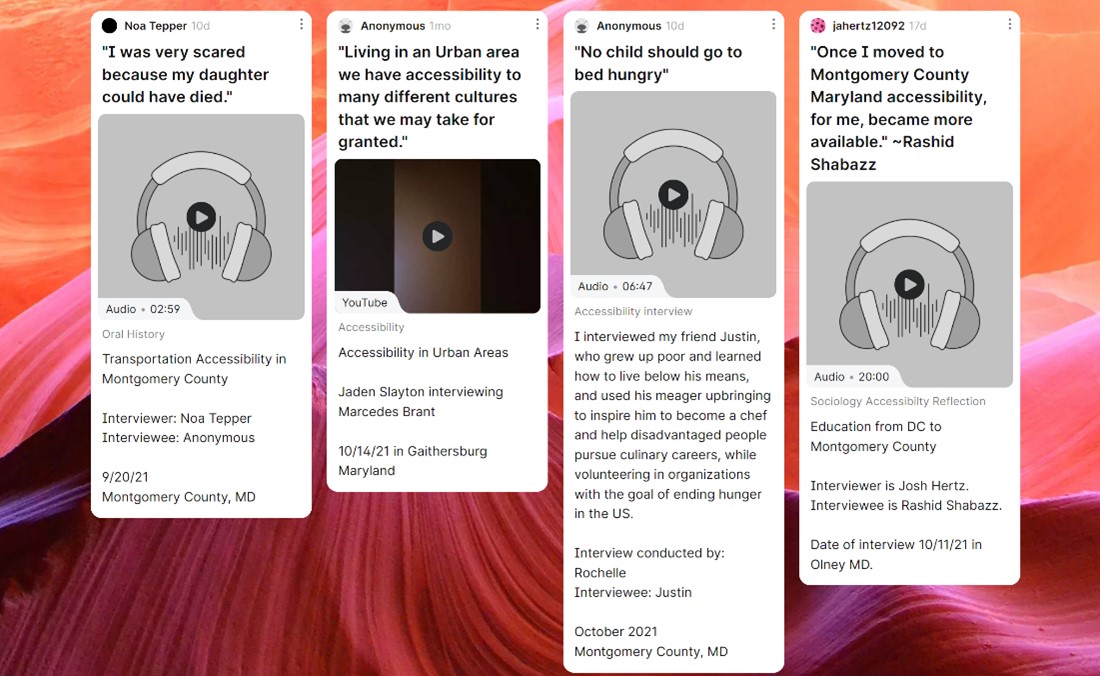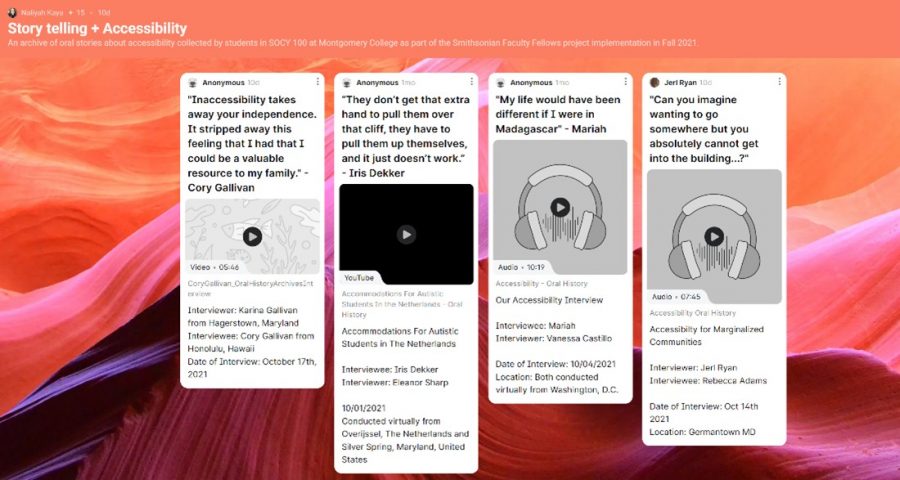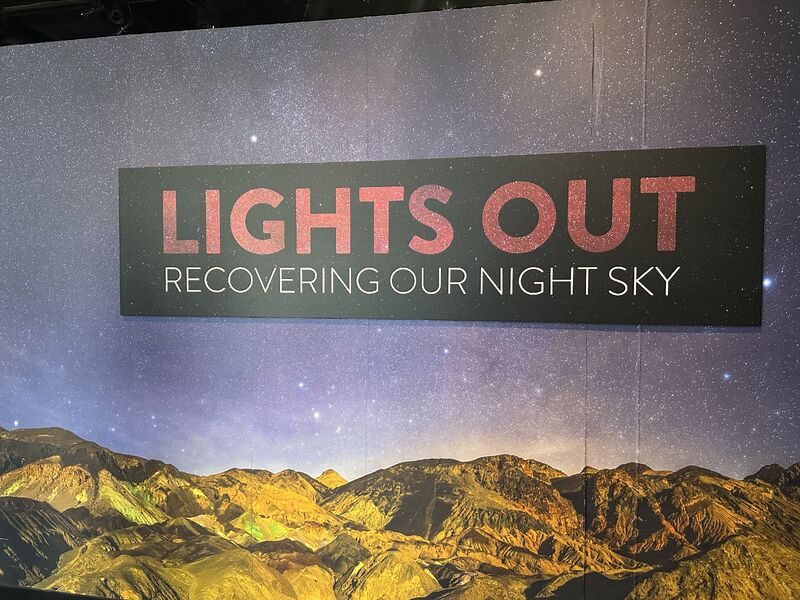By Professor Tiffany Banks On Tuesday, September 30th , students from my COMM 108: Foundations…
by Dr. Naliyah Kaha, Professor of Sociology
When I designed my Smithsonian Faculty Fellow course assignment, I knew that it had to be something that would work in my asynchronous distance learning class. Students in these courses are assigned weekly discussion board posts where they are required to respond to my questions as well as one another. There are two weeks where the discussion board posts are replaced by module reflections. These assignments are completed individually by students and submitted to me via a written or video / audio response. I decided to replace one of the two reflections with the assignment I designed as a Smithsonian Faculty Fellow.
Since the course was completely online and we are still in a pandemic, rather than asking students to do physical or virtual museum visits, I had them engage with resources on Smithsonian websites. The resources, along with their course readings, prepared them for conducting interviews and creating a class oral story archive on the topic of accessibility—a concept that has received much more attention over the past two years as the world is grappling with new ways of doing and being.
I sandwiched introducing the assignment between their research methods & ethics and culture modules and gave them step by step details on how to complete each portion of the assignment along with examples. The goal was to keep students from being overwhelmed, but to also keep them on task over a long period of time so that they did not wait until the end to begin working on the assignment. I also wanted them to see how each part of the assignment connected to the concepts they were learning in the course. They were introduced to the project on Sept. 13th and given until Oct. 17th to complete it. The assignment was broken down into three sections: Preparation (e.g., learning how to conduct an oral history, creating informed consent release forms, creating semi-structured interview protocols), Data/Story Collection (e.g., identifying a participant, getting informed consent/release form signed, conducting the interview), and Archival & Reflection (e.g., editing and uploading the story to the class archival padlet and reflecting on the experience). I posted a video explaining the assignment and showing them where and how to access everything needed to complete it along with weekly reminders and encouragement.
When the class padlet began to populate with the stories collected by students, it was as if our online course “came alive.” It was filled with students and community members engaging in powerful, meaningful discussions about the topic of accessibility. I was floored by the level of care students put into their work. Whether interviewing family members, neighbors, colleagues, friends, or community members it was obvious they had taken time to work on their interviewing techniques and deeply respected the stories they collected. Having been given only the broad topic of accessibility to explore, I was also excited to see and hear the numerous ways that it was defined and explored in relation to physical ability, race, socio-economic status, transportation, language, gender etc.


 When I began designing this assignment, I wasn’t sure how successful it would be in an online course. What I’ve discovered is that these types of assignments can be transformative in changing isolating online learning environments. Collective projects created from each student’s individual contributions encourage a high level of investment from students. Unlike a group project, they can work at their own pace and submit their independent work. However, they still get the benefit of seeing how their project contributes to something larger than themselves and seemed quite proud to be a part of a collective effort. This form of learning fosters meaningful interactions between students and their communities (both within and outside of the class). Not only did I get to know students better, but they got to know one another more as they listened to the interviews and stories collected by their peers.
When I began designing this assignment, I wasn’t sure how successful it would be in an online course. What I’ve discovered is that these types of assignments can be transformative in changing isolating online learning environments. Collective projects created from each student’s individual contributions encourage a high level of investment from students. Unlike a group project, they can work at their own pace and submit their independent work. However, they still get the benefit of seeing how their project contributes to something larger than themselves and seemed quite proud to be a part of a collective effort. This form of learning fosters meaningful interactions between students and their communities (both within and outside of the class). Not only did I get to know students better, but they got to know one another more as they listened to the interviews and stories collected by their peers.
By giving students the right mix of structure and freedom, they are able take ownership and pride in their work. The assignment itself can become an empowering and cherished part of their academic experience. Perhaps most important of all is that assignments like this spark students’ curiosity and teach active listening skills. Students frequently cited in their reflections how the assignment fostered empathy and a desire to learn about and attempt to understand the experiences of others—to not be so quick to make assumptions about their lives and experiences. They concluded their assignments eager to continue collecting oral stories, especially from family members.





This Post Has 0 Comments